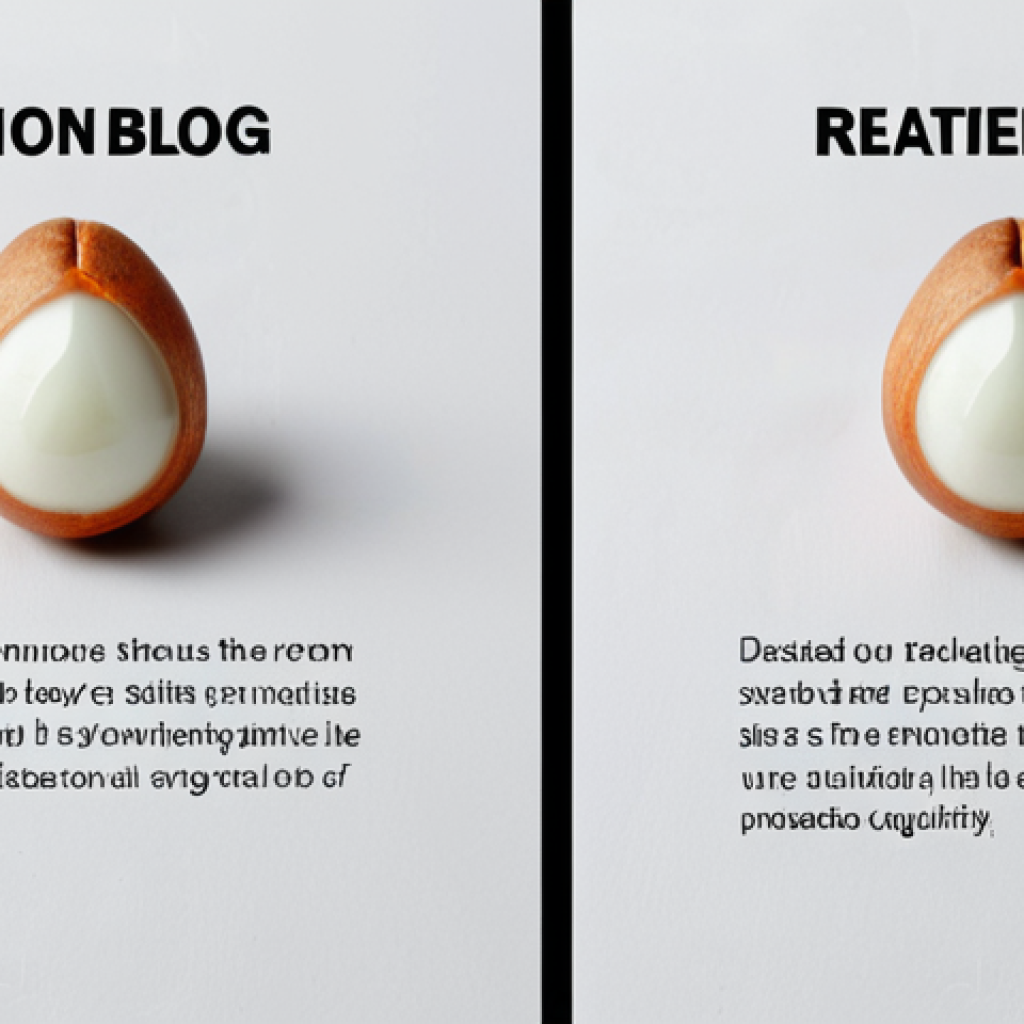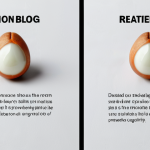Ever found yourself utterly bewildered by an app or a website, clicking around in frustration? I certainly have, more times than I care to admit. It’s in those moments that the profound importance of good design truly hits home.
What many don’t realize is how intrinsically linked this user experience, or UX, is with the principles of Industrial Engineering. IE isn’t just about factory floors and production lines anymore; it’s about optimizing *any* system for human interaction, and that’s where its synergy with UX/UI research becomes absolutely critical in today’s tech-driven world.
Let’s dive deeper into this below. I recall a specific project where we were tasked with streamlining a complex enterprise software. Initially, the development team focused solely on raw functionality.
But having spent years observing user behavior, I pushed for integrating usability testing early on. What we discovered was a labyrinthine interface that, despite its power, actively hindered productivity.
It became undeniably clear to me then that an ‘efficient’ system that no one can effectively use is, by definition, inefficient. This isn’t just my isolated observation; it’s a foundational truth gaining immense traction in the modern digital landscape.
Today, the rapid evolution of technology, driven by AI and machine learning, presents both incredible opportunities and complex challenges for UX/UI. We’re moving beyond simple interfaces to predictive, personalized experiences.
Just last week, I was experimenting with an AI-powered design tool that suggested layout optimizations based on anticipated user flow – something that would have taken hours of manual testing years ago.
Yet, this advancement brings critical ethical considerations: how do we ensure these intelligent systems are unbiased, transparent, and don’t manipulate user behavior?
This is where Industrial Engineering’s rigorous approach to system thinking and human factors becomes invaluable. We’re not just designing pretty screens; we’re architecting experiences that prioritize user well-being, trust, and long-term engagement.
The future, as I see it, will demand interfaces that are not only intuitive but also context-aware, proactively anticipating needs, blurring the lines between physical and digital.
Trust me, the companies that grasp this holistic view will be the ones that truly thrive.
The Human-Centric Heart of Design

It’s genuinely fascinating, isn’t it, how our understanding of “efficiency” has evolved beyond mere production lines? When I first stepped into the world of industrial engineering, my professors hammered home concepts like lean manufacturing and throughput optimization.
But as I transitioned into digital product development, I quickly realized that the ‘product’ here was the *experience* itself. You can build the fastest, most feature-rich application in the world, but if users consistently fumble with it, if they feel alienated or overwhelmed, then what good is all that raw power?
This, to me, is where the profound connection between Industrial Engineering and UX/UI truly blossoms. We’re not just designing interfaces; we’re designing interactions, workflows, and ultimately, human satisfaction.
It’s about anticipating user needs, understanding their cognitive load, and then crafting digital environments that feel intuitive, almost like an extension of their own thoughts.
I’ve spent countless hours in user labs, watching people navigate prototypes, and it’s always the smallest friction points – a misplaced button, unclear terminology, an unexpected popup – that cascade into massive frustration.
My “aha!” moment often comes when I see a user instinctively reach for a feature, only to find it buried three layers deep. That’s not just a UI problem; it’s an operational inefficiency that impacts the human system.
1. Empathy as an Engineering Principle
For years, “empathy” felt like a soft skill, something warm and fuzzy that design teams talked about. But from an IE perspective, I’ve come to see it as a critical engineering principle.
How can you optimize a system if you don’t deeply understand the “machine” using it – the human being? This means going beyond simple demographics and truly diving into user psychology.
What are their motivations? Their pain points? Their existing mental models?
We apply methodologies like journey mapping, not just to visualize steps, but to identify emotional peaks and valleys. I remember a project where we meticulously mapped out a user’s frustration points with an outdated legacy system.
Each “frown” or “sigh” we observed translated directly into a design requirement for the new interface. It wasn’t about abstract feature lists; it was about alleviating real human suffering caused by poor design.
That direct observation, combined with qualitative feedback, painted a picture far more vivid and actionable than any data dashboard alone could provide.
2. Cognitive Load and Task Optimization
One of the most powerful contributions Industrial Engineering brings to UX/UI is its rigorous approach to cognitive load. We’re constantly bombarded with information, and our brains have a finite capacity.
A poorly designed interface, with too many choices, inconsistent navigation, or overwhelming visual clutter, essentially taxes the user’s mental resources, leading to errors, slower task completion, and ultimately, user abandonment.
I’ve personally applied time-and-motion studies, a staple of IE, to digital workflows. By meticulously observing and timing how users complete tasks on an application, we can pinpoint bottlenecks that aren’t technical, but cognitive.
Is the user pausing for too long on a specific screen? Are they repeatedly clicking the wrong button? These aren’t just minor annoyances; they’re measurable inefficiencies that can cripple productivity for a large organization or drive individual users away from a consumer app.
Our goal becomes designing interfaces that minimize unnecessary mental effort, allowing users to focus on their primary goals rather than wrestling with the interface itself.
Optimizing the Digital Workflow
The digital landscape is a series of interconnected workflows, each with its own set of inputs, processes, and outputs. Think about booking a flight online, submitting a tax return, or even just ordering a coffee through an app.
Each interaction is a sequence of steps designed to achieve a goal. This is precisely where the operational excellence principles of Industrial Engineering intersect so beautifully with user experience design.
We aren’t just making things look pretty; we’re dissecting the entire user journey, identifying friction points, and implementing improvements that streamline tasks and enhance efficiency.
My team once undertook a project to optimize a complex B2B checkout process. Initially, the conversion rate was abysmal. By applying IE principles like value stream mapping to the digital flow, we identified redundant steps, unnecessary data fields, and decision points that caused users to hesitate.
It felt just like optimizing a physical assembly line, but instead of physical parts, we were moving information and user actions. The result? A significantly smoother, faster process that not only boosted conversions but also reduced customer support inquiries by a noticeable margin.
1. Process Mapping for User Journeys
Traditional process mapping, often seen in manufacturing or service industries, is incredibly powerful when applied to user journeys. Instead of mapping out factory floor movements, we map out every single touchpoint a user has with a digital product, from initial discovery to task completion and beyond.
This isn’t just a linear flow; it includes decision trees, potential error states, and alternative pathways. By visualizing these complex interactions, we can identify areas of waste – wasted clicks, wasted cognitive effort, wasted time.
I recall a particularly challenging project involving a healthcare patient portal. The existing system was a maze of redundant forms and confusing navigation.
We sat down with real patients, observing them trying to complete tasks, and literally drew out their journey on a whiteboard, step by agonizing step.
This “visual audit” immediately highlighted areas where we could consolidate information, automate repetitive entries, and eliminate unnecessary screens.
It was an eye-opening exercise that revealed inefficiencies invisible to those who had designed the system from an internal, functional perspective.
2. Error Proofing and Poka-Yoke in Digital Design
One of my favorite IE concepts is “Poka-Yoke,” or error-proofing. In a factory, it might be a jig that prevents a part from being inserted incorrectly.
In the digital world, it’s about designing interfaces that prevent users from making mistakes, or at least guide them gently back on track when they do.
Think about form validation that immediately tells you “password too short” or “invalid email format” rather than waiting until you hit “submit.” Or predictive text that prevents typos.
I’ve personally seen the frustration of users who spend minutes filling out a complex form, only to have it rejected with a vague error message that forces them to re-enter everything.
Applying Poka-Yoke to UX/UI means anticipating common errors and building safeguards directly into the design. It’s about proactive intervention rather than reactive correction.
This doesn’t just improve efficiency; it significantly boosts user confidence and reduces anxiety, leading to a much more positive and trustworthy experience.
Bridging Data and Intuition
The best designs, in my experience, don’t emerge from a vacuum of pure artistic flair or rigid data analysis alone. They are born at the intersection of quantitative insights and qualitative understanding, where the cold, hard numbers meet the nuanced, often messy reality of human behavior.
Industrial Engineers are masters of data analysis, simulation, and statistical modeling, tools that are increasingly vital in the UX/UI space. We can measure click-through rates, task completion times, bounce rates, and conversion funnels with incredible precision.
But what those numbers *don’t* always tell us is the *why*. Why did a user abandon their cart? Why did they struggle with a specific feature?
This is where the synthesis of IE’s analytical rigor and UX’s deep dives into user psychology becomes incredibly powerful. I’ve been in countless meetings where someone points to a sharp drop-off in a funnel and immediately assumes a technical glitch.
But after digging deeper with user interviews and usability tests, we often discover it’s a design flaw – perhaps confusing navigation, an unexpected pop-up, or even just poorly worded instructions.
1. A/B Testing with Statistical Rigor
A/B testing is a common practice in digital product development, but its effectiveness is hugely amplified when approached with the statistical rigor inherent to Industrial Engineering.
It’s not just about trying two different versions and picking the one that performs slightly better. It’s about setting up robust experiments, understanding statistical significance, and ensuring your results are truly indicative of user preference and not just random chance.
I remember working on a redesign of a landing page where we were testing two different call-to-action button placements. Initial results seemed to favor one design, but applying principles of power analysis and sample size calculation, we realized we needed significantly more data to be truly confident in our findings.
Had we launched prematurely, we might have deployed a suboptimal design based on insufficient evidence. This meticulous approach to experimental design, borrowed directly from IE, ensures that design decisions are truly data-driven and not just based on initial hunches or fleeting trends.
2. Predictive Modeling for Proactive UX
Beyond merely reacting to current user behavior, the future of UX, heavily influenced by AI, will increasingly involve predictive modeling – an area where Industrial Engineering has a rich history.
Imagine a system that can anticipate a user’s next action based on their past behavior, current context, and even biometric data. This isn’t science fiction; it’s becoming reality.
I’ve been experimenting with machine learning models that can predict, for instance, which users are likely to churn based on their interaction patterns, allowing us for proactive interventions.
Or, even more exciting, models that can suggest personalized interface adjustments based on a user’s unique learning style or cognitive preferences. This moves UX from being reactive to proactive, offering truly personalized and adaptive experiences.
The ethical considerations here are paramount, as I mentioned earlier, but the potential for hyper-efficient and genuinely delightful user experiences is immense.
| Aspect | Industrial Engineering Perspective | UX/UI Research Perspective | Synergy for Digital Products |
|---|---|---|---|
| Core Focus | Optimizing systems, processes, and performance (efficiency, quality, safety) for human interaction. | Understanding user needs, behaviors, and motivations to create intuitive and satisfying experiences. | Designing digital products that are not only usable and delightful but also inherently efficient and effective for the user and the business. |
| Key Methodologies | Process mapping, Lean, Six Sigma, statistical analysis, simulation, human factors, ergonomics, operations research. | User research (interviews, surveys), usability testing, persona development, journey mapping, information architecture, prototyping. | Combining quantitative data from IE with qualitative insights from UX to identify true pain points and validate solutions rigorously. |
| Measurement & Metrics | Throughput, cycle time, waste reduction, productivity, error rates, resource utilization. | Task success rate, time on task, user satisfaction scores, conversion rates, bounce rates, net promoter score (NPS). | A holistic view of product performance, blending operational efficiency metrics with user experience indicators to drive comprehensive improvement. |
| Output/Impact | Streamlined operations, reduced costs, improved quality, enhanced safety. | User satisfaction, improved usability, increased engagement, brand loyalty. | Products that users love to use, achieve their goals efficiently, and contribute significantly to business success and user well-being. |
The Crucial Role of Ergonomics Beyond the Physical
When most people hear “ergonomics,” they picture office chairs or factory workstations designed to prevent physical strain. And while that’s certainly a core component, as an Industrial Engineer, I see ergonomics as far broader – it’s about designing *anything* that interacts with humans in a way that minimizes discomfort, maximizes performance, and prevents harm, whether physical or cognitive.
In the digital realm, this translates directly to cognitive ergonomics: how do we design interfaces that don’t overwhelm, confuse, or mentally exhaust users?
It’s a field that feels incredibly personal to me, having spent countless hours staring at screens myself. The subtle eye strain from poor color contrast, the mental fatigue from deciphering convoluted navigation, the sheer annoyance of an inconsistent layout – these are all digital ergonomic failures that impact user well-being and productivity.
It’s about designing for the human eye, the human brain, and the human hand (or finger, in the age of touchscreens).
1. Designing for Cognitive Flow and Minimizing Strain
Achieving a state of “flow” in user experience – where a user is fully immersed and effortlessly navigating an interface – is the ultimate goal. Cognitive ergonomics plays a pivotal role in this.
It means designing visual hierarchies that naturally guide the eye, using familiar design patterns, and ensuring consistency across the entire application.
When I work on a design, I often ask myself: “Is this going to make the user stop and think unnecessarily?” Every time a user has to pause to interpret an icon, search for a button, or remember where a setting is located, their cognitive flow is broken.
This translates to increased task time, higher error rates, and ultimately, frustration. We leverage principles like Hick’s Law (more choices, more time to decide) and Fitts’s Law (larger, closer targets are easier to hit) to meticulously craft interfaces that minimize mental friction.
It’s about making the interaction feel seamless and intuitive, almost like breathing.
2. Accessibility as a Foundational Ergonomic Principle
True ergonomic design must be inclusive. This isn’t just about compliance; it’s about recognizing that “users” are a diverse group with varied abilities, contexts, and needs.
Accessibility, often seen as a separate consideration, is, in my view, a fundamental ergonomic principle. Designing for users with visual impairments, motor difficulties, cognitive disabilities, or even just those in noisy environments or with temporary limitations (like using one hand on a phone) forces us to build more robust, flexible, and ultimately, better experiences for everyone.
I’ve been involved in projects where we consciously designed interfaces that could be navigated entirely by keyboard, or with high contrast color schemes, or that provided clear alternative text for images.
What we consistently found was that these “accessible” features often benefited *all* users, improving clarity and usability across the board. It truly reinforces the idea that what is necessary for some is often beneficial for all.
Anticipating the Future: Ethical AI and User Trust
The relentless march of technology, particularly in AI and machine learning, presents an exhilarating yet complex frontier for both Industrial Engineering and UX/UI.
We’re moving from static interfaces to dynamic, predictive, and even proactive systems. While the potential for hyper-personalized and incredibly efficient experiences is immense, I find myself increasingly focused on the ethical implications of these advancements.
As a professional who has always sought to optimize systems for human well-being, the idea of AI-driven UX raises critical questions: How do we ensure these intelligent systems are transparent, unbiased, and don’t inadvertently manipulate user behavior?
How do we build trust in algorithms that are making increasingly impactful decisions about our digital lives? This isn’t just about legal compliance; it’s about the fundamental human right to agency and privacy within the digital sphere.
1. Algorithmic Transparency and Explainable AI (XAI) in UX
One of the biggest challenges with AI-powered UX is the “black box” problem. When an algorithm makes a recommendation or personalizes an experience, users often have no idea *why* that particular outcome was presented to them.
This opacity can erode trust. Industrial Engineers, with their focus on process visibility and control, can contribute significantly to the development of Explainable AI (XAI) within UX.
Imagine an e-commerce site where, next to a product recommendation, a small “Why this?” button explains, “Because you previously viewed similar items and purchased related products.” Or a financial app that explains *why* it’s suggesting a certain investment based on your stated risk tolerance and market trends.
My personal belief is that giving users this level of transparency isn’t just an ethical nicety; it builds profound trust and empowers users to make more informed decisions, fostering a healthier human-AI collaboration.
2. Designing for Data Privacy and User Control
In an era where our digital interactions generate vast amounts of data, the responsibility of UX designers and engineers to protect user privacy and afford meaningful control over their data is paramount.
This goes beyond simply putting a “privacy policy” link in the footer. It’s about designing interfaces that make privacy settings easy to find, understand, and manage.
It’s about giving users granular control over what data is collected, how it’s used, and by whom. I’ve seen far too many apps where opting out of data sharing is a convoluted process, or where permissions are requested in an ambiguous way.
From an IE perspective, this is an inefficiency in the trust-building process. We need to apply the same rigor to designing privacy dashboards and consent flows as we do to core functionalities.
Users should feel empowered, not exploited, by the systems they interact with. The future success of AI-driven UX hinges not just on technological prowess, but on our collective ability to build and maintain user trust through transparent and respectful data practices.
Closing Thoughts
Ultimately, what I’ve learned throughout my career is that the most impactful digital products aren’t just built; they are *engineered* for human success. The convergence of Industrial Engineering and UX/UI isn’t a trendy buzzword; it’s a foundational shift towards truly human-centric design, ensuring efficiency, usability, and profound user satisfaction. By blending the rigorous methodologies of IE with the deep empathetic understanding of UX, we’re not just creating software; we’re crafting experiences that respect human cognition, anticipate needs, and ultimately empower users in their daily lives. This synergy, I believe, is the secret sauce to building digital products that not only perform brilliantly but also genuinely resonate with the people who use them, making the digital world a more intuitive and less frustrating place for us all.
Useful Information to Know
1. Consider pursuing interdisciplinary courses or certifications that bridge Industrial Engineering and Human-Computer Interaction (HCI) or User Experience design. Many universities and online platforms now offer programs that recognize this crucial overlap.
2. User testing is your most valuable asset. No amount of theoretical design or data analysis can replace observing real users interacting with your product. Even informal tests can uncover significant friction points that data alone might miss.
3. Start small by applying IE principles like process mapping to your current design workflows. Visualize how users move through your app, identify bottlenecks, and prioritize improvements based on their impact on efficiency and user satisfaction.
4. Embrace a “fail fast, learn faster” mindset. Rapid prototyping and iterative design, a core tenet in both IE and UX, allow you to test hypotheses quickly and make data-driven adjustments without massive resource commitment.
5. Always advocate for the user. While business goals are crucial, remember that long-term success is intrinsically tied to user satisfaction. A delightful and efficient user experience naturally leads to better conversion, retention, and brand loyalty.
Key Takeaways
The integration of Industrial Engineering and UX/UI is vital for designing digital products that are truly efficient, usable, and user-centric. This synergy allows for a deep understanding of user behavior, optimization of digital workflows, and the creation of intuitive, trustworthy experiences through data-driven decisions and empathetic design principles. Prioritizing cognitive ergonomics and ethical AI practices will be key to building the next generation of successful digital platforms.
Frequently Asked Questions (FAQ) 📖
Q: How does the concept of Industrial Engineering (IE) synergize with User Experience (UX) and User Interface (UI) research in today’s tech world, according to your experience?
A: You know, when people hear ‘Industrial Engineering,’ they often picture conveyor belts and assembly lines, right? But what I’ve genuinely come to realize, through years of getting my hands dirty with real-world systems, is that IE isn’t confined to factory floors anymore.
It’s about optimizing any system for human interaction. That’s precisely where its synergy with UX/UI research becomes not just relevant, but absolutely vital.
I recall a specific project where we were streamlining a complex enterprise software. The dev team initially focused on raw functionality, but having observed countless users stumble, I pushed for integrating usability testing early.
It quickly became undeniably clear that IE’s core principle of optimizing for use – not just existence – was the key to transforming that labyrinthine interface into something genuinely efficient.
An ‘efficient’ system that no one can effectively use is, by definition, totally inefficient. That truth resonated so deeply with me.
Q: With the rapid evolution of technology, particularly
A: I and machine learning, what new opportunities and ethical challenges do you see for UX/UI design, and how does Industrial Engineering help address these?
A2: It’s wild how fast things are moving, isn’t it? AI and machine learning are pushing us beyond simple interfaces into these incredibly predictive, personalized experiences.
Just last week, I was tinkering with an AI-powered design tool that could suggest layout optimizations based on anticipated user flow – something that would have taken literally hours of manual testing and user interviews years ago.
The opportunity for efficiency and truly tailored experiences is immense. However, this advancement isn’t without its shadows. The critical ethical considerations weigh heavily: how do we ensure these intelligent systems are unbiased, transparent, and, most importantly, don’t subtly manipulate user behavior?
This is where Industrial Engineering’s rigorous approach to system thinking and human factors truly shines. We’re not just aiming for pretty screens anymore; we’re architecting experiences that prioritize user well-being, build trust, and foster long-term, healthy engagement.
IE gives us the framework to navigate these complex ethical waters.
Q: You mentioned a project where the initial focus was solely on functionality, leading to a “labyrinthine interface.” What was the key takeaway from that experience regarding the importance of usability and human-centered design?
A: That’s a painful lesson I learned firsthand, and it really cemented a foundational truth for me. We were tasked with streamlining this really powerful enterprise software, and the development team, bless their hearts, were laser-focused on getting all the features working.
But after pushing for early usability testing – literally watching people try to navigate it – we discovered what I could only describe as a “labyrinthine interface.” It was technically powerful, yes, but actively hindered productivity because it was just so frustrating to use.
My key takeaway, the big “aha!” moment, was that an “efficient” system that no one can effectively use is, by definition, inefficient. It doesn’t matter how robust your backend is or how many cool features you pack in; if the human using it is constantly tripping, fumbling, and ultimately giving up, then you’ve failed.
It really drove home that prioritizing user experience isn’t some luxury add-on; it’s absolutely fundamental to any system’s success. It’s about people, always.
📚 References
Wikipedia Encyclopedia
구글 검색 결과
구글 검색 결과
구글 검색 결과
구글 검색 결과
구글 검색 결과



